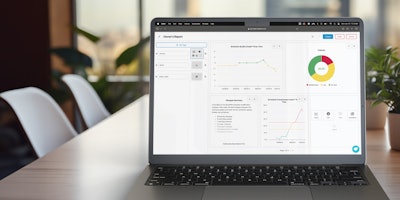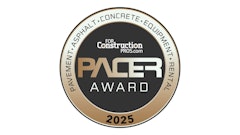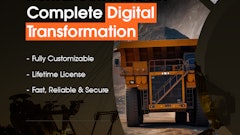
Having choices is a good thing. Having too many choices can become a problem.
Exhibit A is the construction industry. It has experienced a staggering technological revolution over the past few decades, with software solutions emerging to tackle nearly every aspect of the construction process. Project management, schedule creation, schedule analysis, budgeting, resource allocation, and communication – there’s a software for everything.
While these advances promise improved efficiency, reduced delays, and streamlined processes, the plethora of options can result in a phenomenon called “choice overload” or “the paradox of choice.” It’s similar to someone going into an ice cream store with 100 flavors; you’re initially excited about the number of flavors to choose from, only to end up unable to make a decision. With so many different platforms, tools, and apps, how do you choose the best ones for your organization? Are we approaching a point where the sheer volume of choices is counterproductive?
The Proliferation of Construction Software
Software providers have flooded the construction market with tools designed to improve every facet of project management. Some platforms focus exclusively on construction, while others provide all-in-one project management solutions. The goal of these tools is to make construction projects more efficient and predictable. However, each software has its own set of features, learning curve, and integration capabilities, making it hard for construction companies to decide which solution -- or combination of solutions -- is right for their unique needs.
Yet, while construction technology is intended to streamline and improve the building process, the presence of too many options can result in confusion and decision fatigue. For project managers, IT professionals, and executives in construction companies, selecting the right software suite is a daunting task.
The Issues
Overlapping capabilities present what is arguably the most perplexing obstacle, as so many construction software tools offer similar features. For instance, project management platforms might include scheduling and budget-tracking modules. On the other hand, scheduling tools may offer basic project management functions. This overlap can make it difficult to determine which tool offers the best fit for your company’s needs without redundantly purchasing multiple programs. Because construction projects involve multiple stakeholders -- architects, engineers, contractors, and clients -- collaboration is essential. Unfortunately, not all software integrates seamlessly with others, creating silos of information that hamper communication.
 Given the range of available options, some industry experts argue that construction is reaching a tipping point in terms of technology overload.SmartPM Technologies
Given the range of available options, some industry experts argue that construction is reaching a tipping point in terms of technology overload.SmartPM Technologies
Of course, even the most user-friendly software solutions require a learning curve accompanied by varying levels of training. When teams adopt new technology, they need training, support, and time to become proficient. Too much new technology can lead to employee frustration, decreased productivity, and a slowdown in operations as staff adjust to unfamiliar systems. What’s more, the financial burden of implementing multiple software platforms can add up quickly. Licensing fees, subscription models, and additional costs for integrations or customization can strain budgets, particularly for small and medium-sized construction firms. The cost-benefit ratio of adopting new technologies becomes harder to justify if the software does not immediately deliver clear value.
With a seemingly endless list of options, construction firms often suffer from the aforementioned choice overload. Consequently, managers might delay making choices out of fear of selecting the wrong tools, further complicating project timelines or slowing innovation within the company.
A Tipping Point?
Given the range of available options, some industry experts argue that construction is reaching a tipping point in terms of technology overload. The question is whether this surge in software solutions is still benefiting the industry or becoming a hindrance.
On one hand, software advancements are enabling real-time data collection, more accurate forecasting, and higher levels of transparency. The ability to automate time-consuming tasks, such as schedule updates or resource allocation, is a game-changer for project managers. Similarly, data-driven decision-making tools allow firms to identify risks early on and address them proactively. Conversely, the overwhelming number of choices – along with the difficulty of evaluating each tool’s real value -- has made technology selection a growing challenge. In some cases, construction firms find themselves adopting software that is more sophisticated than they need or investing in multiple tools that serve similar functions. In the end, the excess technology may not lead to the expected improvements, leaving teams burdened with unnecessary complexity.
Striking a Balance
To avoid technology overload, construction firms need a strategy for selecting software that aligns with their goals and operational needs. A systematic approach can help companies navigate the sea of options more efficiently. Here are some steps construction companies can take:
- Assess Your Needs: Identify the specific areas where technology can have the greatest impact. Do you need better project management tools,or a way to analyze your schedules and spot bottlenecks early? Understanding your core needs can help you filter out options that are either unnecessary or not needed at the moment.
- Focus on Scalability: When choosing software, think long-term. Is the tool scalable? Can it grow with your business as projects become more complex? Investing in technology that can adapt to your changing needs will prevent you from having to overhaul your systems down the road.
- Prioritize Integration: Make integration with the platforms you’re already using a priority. Seamless integration is key to avoiding silos and ensuring that all stakeholders are on the same page. If a tool doesn’t integrate well, you may spend more time troubleshooting and managing workarounds than reaping the intended benefits.
- Involve Your Team: Technology decisions should not be made in isolation. Involve the people who will actually be using the software on a day-to-day basis, such as project managers, schedulers, and IT staff. Their input can help you identify usability issues or specific needs that might be overlooked at the executive level.
- Plan for Training: Any new software will require time for employees to adjust. Plan for this by budgeting for training sessions and support resources. The smoother the onboarding process, the quicker your team can leverage the new tools effectively.
Less Can Be More
Technology has the potential to revolutionize the construction industry, but there’s a growing need to cut through the noise. With so many software options, companies may be overwhelmed by choice, leading to confusion, inefficiency, and wasted investment. Consequently, construction firms should focus on selecting tools that meet their most pressing needs; integrate well with existing systems; and are user-friendly. By strategically narrowing down your technology portfolio, your company can harness the true potential of these innovations without falling prey to technology overload. In the end, less can be more when it comes to construction technology.





















